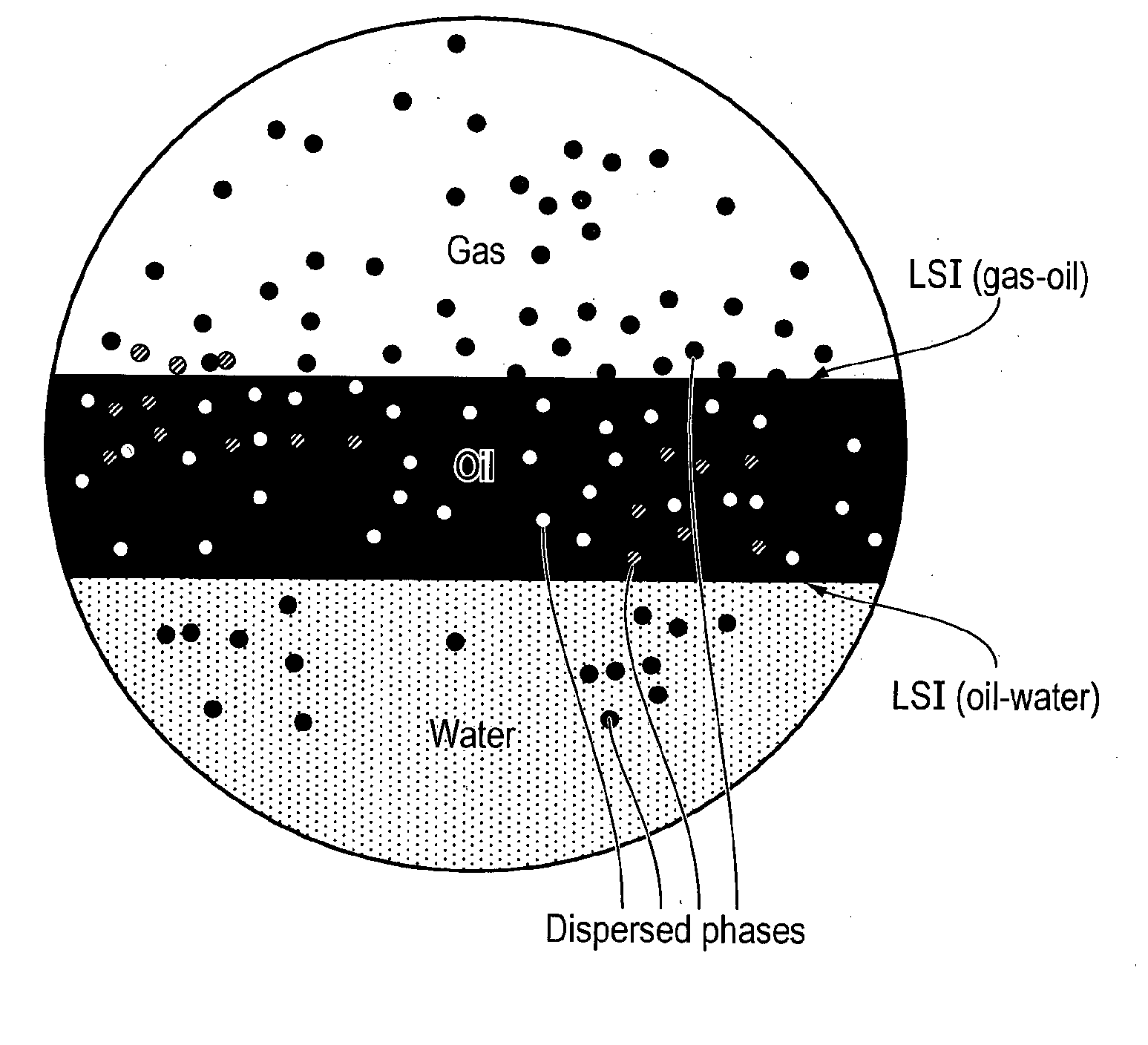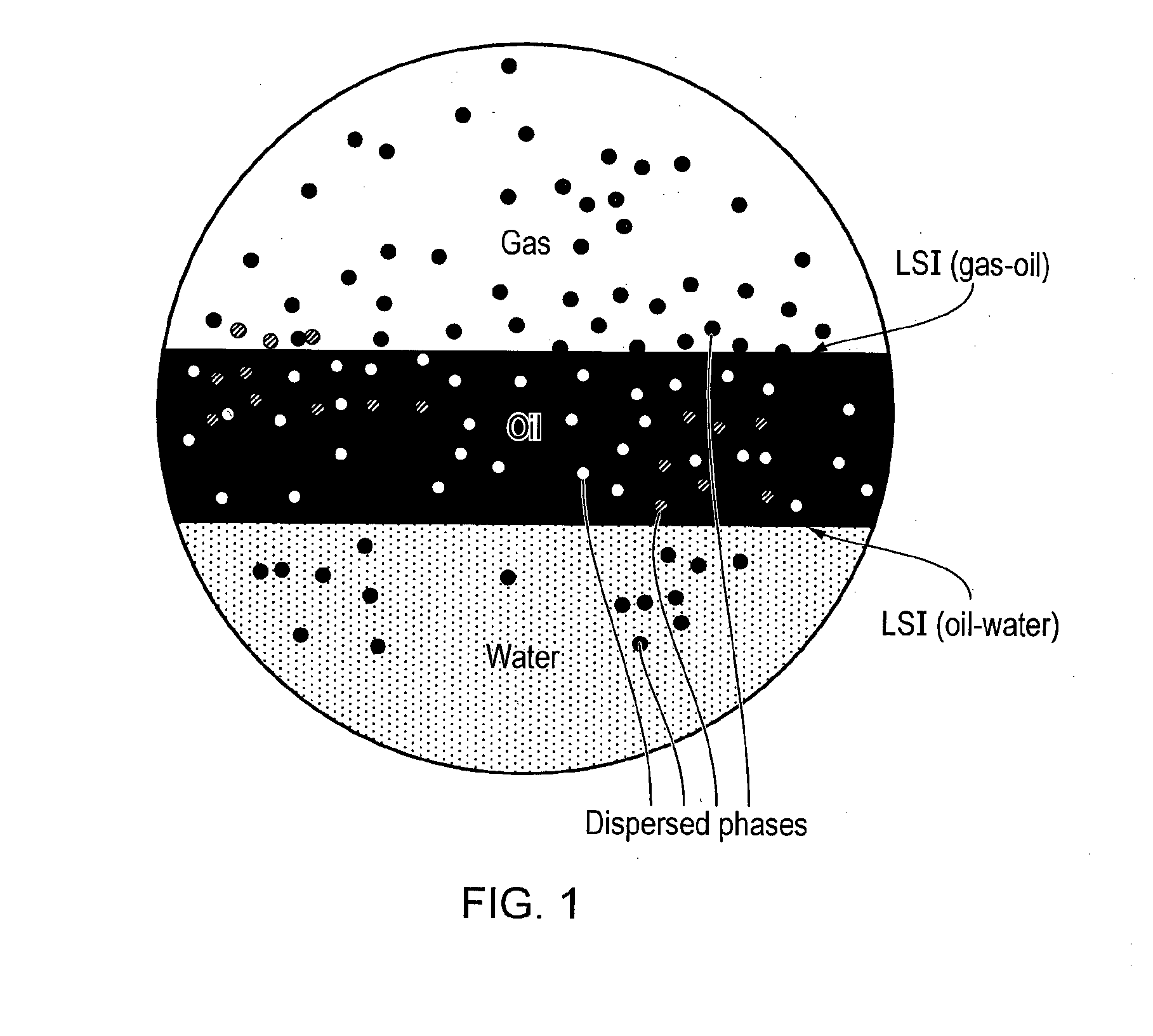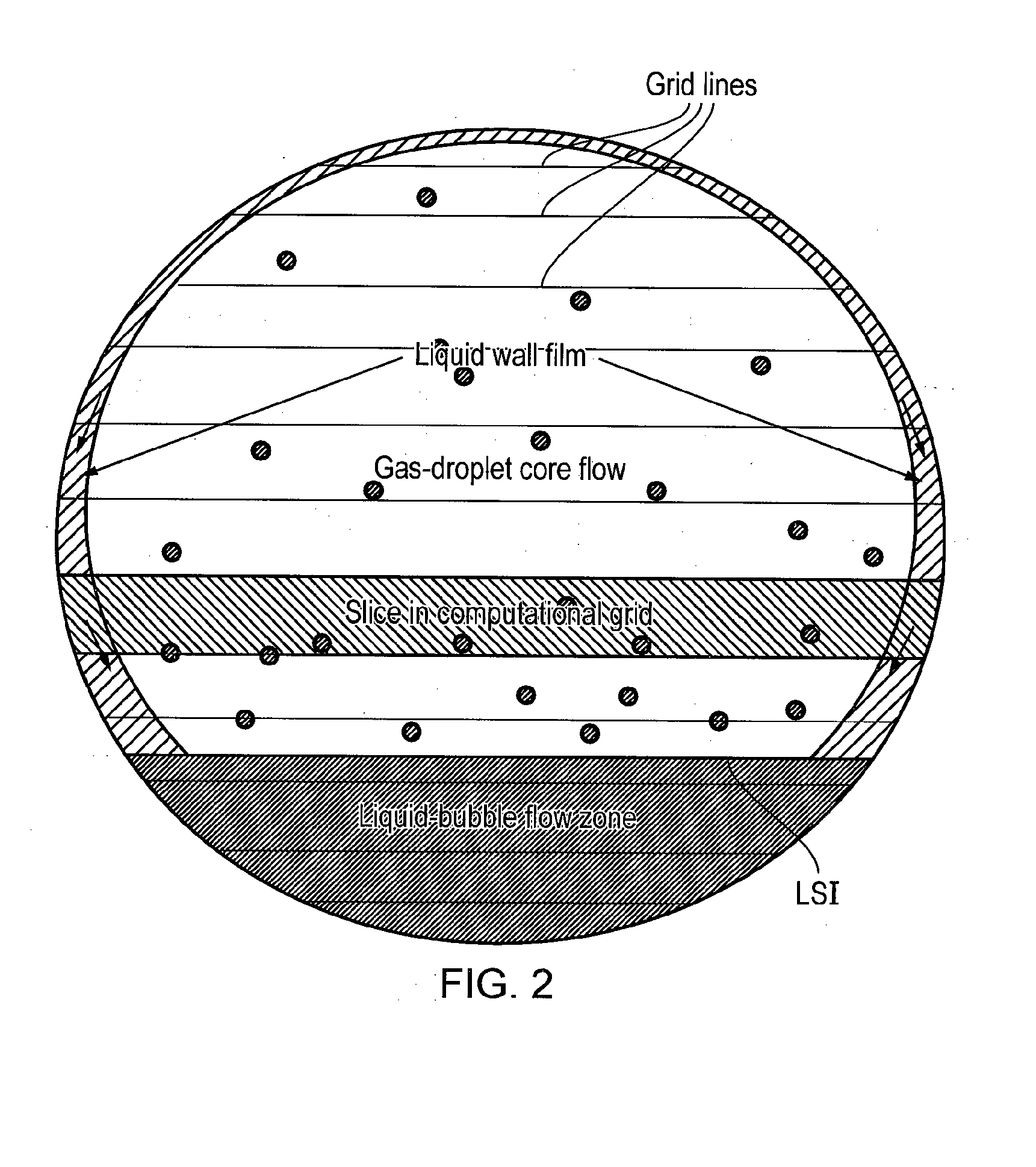Method for simulation of multiphase fluid flow in pipelines
a fluid flow and pipeline technology, applied in the direction of instrumentation, design optimisation/simulation, computation using non-denominational number representation, etc., can solve the problems of large computational time, large amount of computational time, and inability of dispersed flow models to handle flows significantly influenced by flows
- Summary
- Abstract
- Description
- Claims
- Application Information
AI Technical Summary
Benefits of technology
Problems solved by technology
Method used
Image
Examples
example 1
[0088]Using the example embodiment of the invention as a stand alone tool to predict phase distributions, phase accumulation and pressure drops during pipeline transportation of fluids is presented in FIGS. 5a and 5b.
[0089]The pipe has a diameter of 0.189 m, wall roughness is 20 micrometre, densities are 103 (gas), 700 (oil) and 1000 kg / m3 (water), viscosities are 0.000015 (gas), 0.00077 (oil) and 0.001 Pa s (water), and surface tensions are 0.021 (gas-oil), 0.072 (gas-water) and 0.034 N / m (oil-water). The pipe is slightly inclined upwards, with inclination relative to horizontal of 1°. The superficial velocities of gas, oil, and water are 6.0, 0.3 and 0.3 m, respectively. As can bee seen from FIG. 5a, the example embodiment of the invention returns in this case gas, oil and water holdups of 0.71, 0.14 and 0.15, respectively, while the predicted pressure gradient is −88 Pa / m. The predicted spatial distribution volume fractions of gas and water are shown in the figure, while oil exi...
example 2
[0090]This example shows use of the example embodiment of the invention as a stand alone support tool, i.e. the 1D-point model approach, for providing flow information useful in designing and / or operation of oil and gas pipelines.
[0091]FIGS. 6a and 6b is a comparison of experimentally determined velocity profiles and predicted velocity profiles from the example embodiment of the invention. FIG. 6a illustrates graphs of experimentally determined velocity profiles for a set of two-phase flows where the liquid flow velocity is kept constant and the gas flow rate is varied. FIG. 6b provides a similar graphic representation of the same set of two-phase flows as predicted from the example embodiment of the invention. As can bee seen from the figures, the profile model of the example embodiment can closely represent the actual velocity profile and support operators or engineers in making decisions where local flow information is needed.
example 3
[0092]Using the example embodiment of the invention as a stand alone tool for direct engineering analyses. Based on flow rates, fluid properties, diameter and pipe inclination, pressure drop and liquid accumulation are reported. Profile information, including distribution of droplet mass over the pipe cross section, is available for flow assurance assessments.
[0093]The example embodiment of the invention may i.e. give distributions of local shear stresses, wall temperatures, heat transfer coefficients and mass transfer coefficients, all along the periphery of the pipe. The wall shear stresses are available from the hydrodynamic calculation. By adding a homogeneous heat source or mass source to the flow, steady state solutions for the energy and mass equations are found. The slice averaged temperatures and concentrations are related to the local heat and mass fluxes by the aid of specially designed wall functions. In this way local heat transfer coefficients, between bulk flow and pi...
PUM
 Login to View More
Login to View More Abstract
Description
Claims
Application Information
 Login to View More
Login to View More - R&D
- Intellectual Property
- Life Sciences
- Materials
- Tech Scout
- Unparalleled Data Quality
- Higher Quality Content
- 60% Fewer Hallucinations
Browse by: Latest US Patents, China's latest patents, Technical Efficacy Thesaurus, Application Domain, Technology Topic, Popular Technical Reports.
© 2025 PatSnap. All rights reserved.Legal|Privacy policy|Modern Slavery Act Transparency Statement|Sitemap|About US| Contact US: help@patsnap.com



